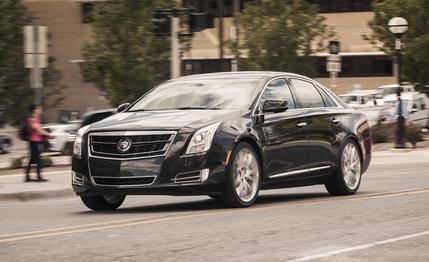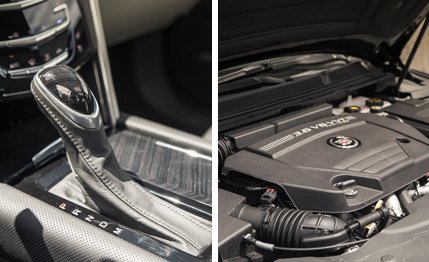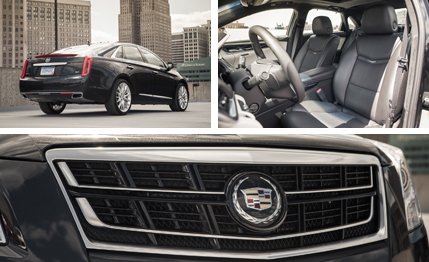
 Instrumented Test
TESTED
Instrumented Test
TESTED
The Cadillac XTS stands apart from the ATS and CTS sports sedans that are redefining America’s luxury automaker. The big soft Caddy is designed for the brand’s old-school customers and those who might set a priority of roominess and ride quality over rortiness. Cadillac XTS buyers need 410 horsepower like they need a motion-sensing touch screen and capacitive-touch climate controls. But where Cadillac’s CUE infotainment system was maddening, we’re down with the addition of a potent turbocharged V-6 between the front wheels. And come to think of it, 1950s and ’60s Caddys had way more power than control, so there’s a bit of legacy here.
This 2014 Cadillac XTS is our first exposure to the Vsport series that slots between Cadillac’s mainstream lineup and the tire-slaying V performance models. Vsport here means the force-fed V-6, the twin turbochargers of which are bolted to a 3.6-liter engine that is a dimensional clone of the naturally aspirated V-6 widely used by GM vehicles (including the standard XTS). However, Cadillac claims the Vsport engine uses a new block, internals, and direct-injection system to contend with the 12 psi of intercooled boost.
Sneaky Fast
The new engine generates smooth, effortless power befitting a large Cadillac. It doesn’t pack the soul-stirring rumble of an eight-cylinder, but the V-6 surpasses the old DTS’s Northstar V-8 in nearly every other regard. With 369 lb-ft of torque from 1900 rpm, the turbocharged XTS makes overtaking other cars a breeze and possesses the sometimes-scary ability to hit triple-digit speeds unintentionally. The six-speed automatic uses the same gear ratios as in the naturally aspirated XTS but with a shorter final-drive ratio. Shifts are quick and logically sound, although the manual shift mode is slow to respond. Most of all, we wish the transmission and the engine could collaborate to speed up throttle response off the line.


In the run to 60 mph, the turbochargers are good for two whole seconds compared with the performance of the naturally aspirated, all-wheel-drive XTS, with the Vsport stopping the clock at 5.2 seconds. The quarter-mile is cleared in 13.6 seconds, 2.1 seconds sooner, at which point the XTS’s digital speedo reads 105 mph. The Vsport is rated by the EPA at 16 mpg city and 24 highway, and we deemed our observed fuel economy of 17 mpg to be quite reasonable. If there’s a weakness with the Vsport, it’s not the new engine.
Challenged Chassis
Unfortunately, the XTS’s chassis hasn’t been rehabilitated for its new job. As in lesser XTS models, the Vsport experience is tainted by a shaky-feeling structure, limp steering, and a suspension that’s on the soft side. Braking and skidpad numbers were no better than what we’ve recorded for naturally aspirated XTS models, and despite GM’s HiPer strut front suspension and all-wheel drive, torque steer still manages to boss around the driver’s palms.


The Vsport badge carries a hefty premium—$5835, to be exact—that should cause shoppers to consider the German alternatives. The V-8 models of the BMW 5-series and Mercedes-Benz E-class are priced between the Vsport’s base price and our test car’s $71,015 sticker and offer much more engaging chassis characteristics.
Cadillac’s media materials suggest that the company flirted with the name XTS Turbo before settling on the Vsport badge. Although not nearly as sexy, “turbo” might have been a more fitting moniker. The Vsport is a far better car than the DTS that used to occupy the XTS’s slot in Caddy’s lineup, but it’s hardly sporty. The Vsport’s ability to raise our pulses is limited to one fact: We can’t wait to drive the powerful 3.6-liter twin-turbo V-6 in a proper sports sedan—namely, the 2014 Cadillac CTS Vsport.